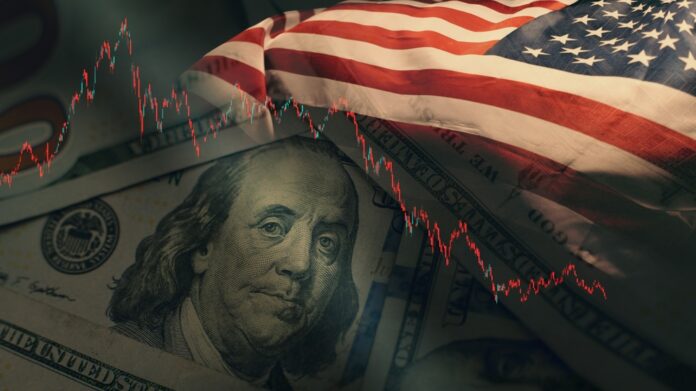The U.S. dollar edged higher on Tuesday, buoyed slightly as traders returned from long weekends in the U.K. and U.S. However, lingering uncertainty over the Trump administration’s trade policies and a major tax-and-spending bill moving through Congress continued to weigh on sentiment.
As of 05:40 ET (09:40 GMT), the U.S. Dollar Index—which measures the greenback against a basket of six major currencies—rose 0.4% to 99.285, recovering slightly after sharp losses last week that brought it near a one-month low.
Dollar Faces Ongoing Pressure
The dollar has come under sustained pressure in recent months as investor confidence in U.S. assets has been dented by President Trump’s unpredictable global tariff stance. On Monday, while U.S. markets were closed for Memorial Day, the euro rallied to a one-month high after Trump backed off from imposing 50% tariffs on EU imports from June 1.
“The renewed standoff between Trump and the EU is a reminder that tariff threats can resurface quickly. As seen in April, the dollar typically bears the brunt of this uncertainty,” analysts at ING noted.
Traders also remain cautious about buying the greenback amid concerns over Trump’s tax-cut bill, which is expected to add significantly to the national debt—a factor that contributed to Moody’s recent downgrade of the U.S. sovereign credit outlook.
The House of Representatives passed a version of the bill last week, sending it to the Senate, where intense debate is expected.
“For the dollar to stabilize, incoming economic data will need to ease recession fears,” ING added. “Deficit concerns are increasingly undermining the dollar’s already fragile footing.”
Tuesday’s U.S. economic calendar includes data on durable goods, housing, and consumer confidence, along with speeches from Minneapolis Fed President Neel Kashkari and New York Fed President John Williams.
Euro Holds Firm Despite Slight Pullback
In Europe, the euro slipped slightly, with EUR/USD down 0.3% to 1.1353 after approaching its highest level since late April. Nonetheless, the currency remains underpinned by supportive comments from ECB President Christine Lagarde.
Lagarde suggested the euro could evolve into a viable alternative to the dollar—bringing significant benefits to the eurozone—if regional governments commit to strengthening the bloc’s financial and security infrastructure.
“If European policymakers push this vision further, we may see an acceleration in strategic long positions on the euro,” ING analysts said.
Supporting this sentiment, Germany’s GfK consumer sentiment index showed a slight improvement for June, rising 0.9 points to -19.9. This marked the third consecutive monthly gain, though the pace of recovery has slowed.
Pound Edges Lower as Food Inflation Rises
GBP/USD dipped 0.2% to 1.3543 after data from the British Retail Consortium (BRC) showed overall shop prices fell 0.1% year-on-year in May, mirroring April’s decline. However, food inflation accelerated to 2.8% in May from 2.6% in April, adding to inflationary concerns.
Yen Retreats as BOJ Signals Possible Rate Hikes
In Asia, USD/JPY rose 0.7% to 143.91, rebounding from last week’s declines. Bank of Japan Governor Kazuo Ueda said the central bank could raise interest rates further if economic conditions continue to improve.
Japanese core inflation hit a two-year high in April, supported by strong wage growth, reinforcing expectations of tighter monetary policy. Still, investors remained cautious amid U.S.-Japan trade tensions. Japanese ministers are expected in Washington in early June for a fourth round of trade talks.
Yuan Steady Amid Trade Uncertainty
USD/CNY ticked up 0.1% to 7.1924 in subdued trading, as concerns over Trump’s trade policy kept investors wary.



